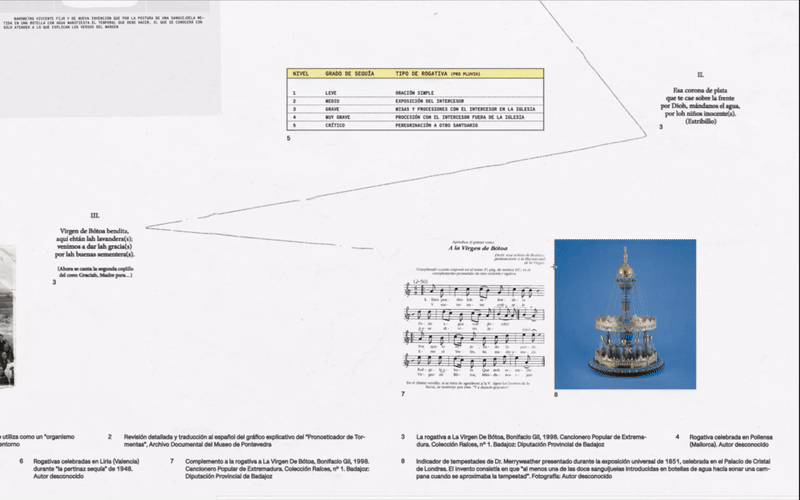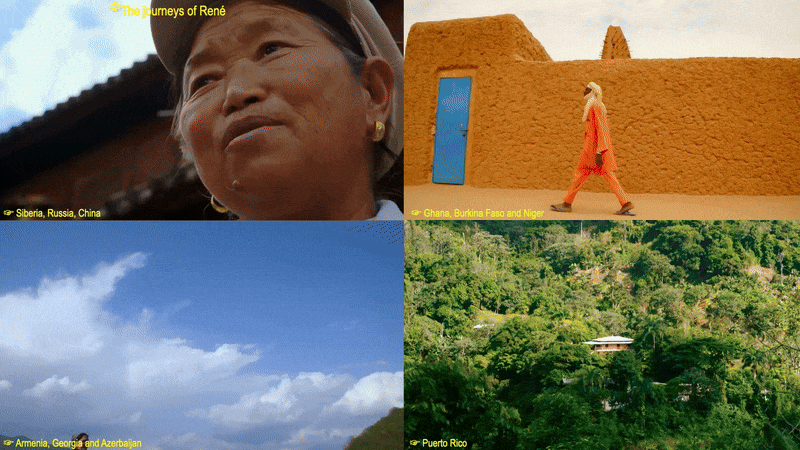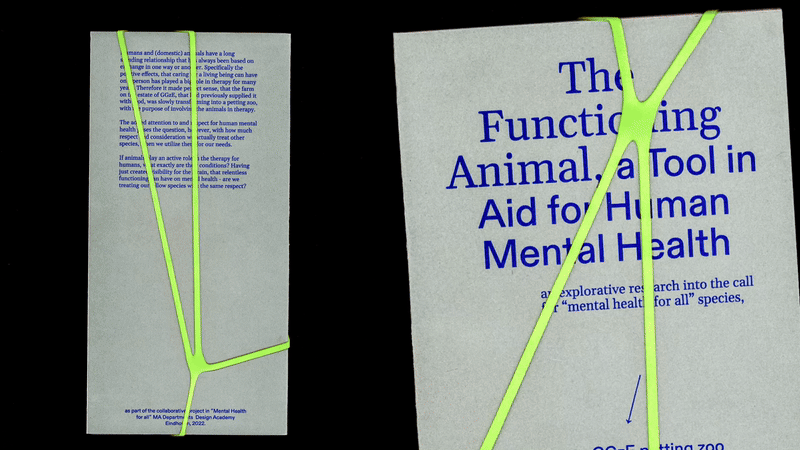
2024 ☞ Spain is a reference in river restoration through the removal of dams and barriers. At least 25,000 kilometers of rivers are expected to be barrier-free by 2030. These processes benefit certain species, improve water quality and prevent flooding. They also force us to recall the motivations and impact of their construction. Quedó en agua de borrajas explores the environmental catastrophe of the Riaño reservoir, which submerged nine villages, erasing their lands and stories. The Riaño valley was flooded on December 31, 1987, one day before the EU environmental regulations that could have saved it came into force. Seeking refuge in the top of their houses, the community of the valley resisted until the very last moment, staging one of the most significant acts of civil disobedience against the hydraulic policies of the territory. The project elaborates on the collective memory of the community and on how control over water often leads to the destruction of environmental and cultural heritage.
→ This project is a collaboration with my dearest Elsa Casanova Sampé. With the fantastic sound piece of Eskarnia, the magical hands of Sara Torres and Elia Bago, the skillful management of the tiles by Stefano Fusani, the magnificent assistance of Claudia Aguilo, the images and videos by Luis Prado-Allende Sito, Miguel Carracedo Matorra, Valentín Costo García, Arsenio Díaz, Antonio Gonzalez Matorra, Jose María Sierra, Roberto Valdés González, the trust of Marina Otero Verzier, and the immense gratitude to Ramiro Pinto, Agustin Lasai and 'RIAÑO VIVO' Community. Quedó en agua de borrajas is a comission for Wet Dreams, the Design and Architecture Biennale of Madrid curated by Marina Otero Verzier and celebrated from March to August 2024 in CentroCentro, Madrid.

2024 ☞ Most societies perform rituals to influence weather conditions when they are not favorable. These practices seek to provoke rain during periods of drought, stop rain when there is flooding, regulate temperature or divert storms to protect communities and crops. The Catholic religion recognizes such rituals, known as pro-pluvia rogations. Depending on the level of drought, rogations can range from public prayers to mass celebrations and pilgrimages. For decades, their organization and execution followed institutional guidelines and were recorded in municipal archives and cathedral records. Today, these documents are valuable sources for Historical Climatology studies, allowing us to understand the climate of the past, present and future.
→ Meteorología Popular, Rogativas y Pronosticadores de Tormentas, is a curatorial research done with Marina Otero Verzier for Wet Dreams, the Design and Architecture Biennale of Madrid curated by Marina Otero Verzier and celebrated from March to August 2024 in CentroCentro, Madrid.

2023 ☞ As a response to the 70% of land dissertation and the annual abandonment of 168.000 dogs in the Spanish context, “El perro poblador” project (the “settler dog” in Spanish) proposes a transformative universe where both realities converge into a beneficial multispecies model. Dogs, transcending their conventional role as domestic human companions, become pioneers in rural communities in risk of disappearence.Following strict guidelines of biological species translocation practices and Spanish historical settlement processes, these dogs serve as catalysts for revitalizing abandoned infrastructures, while embodying the historical, traditional, and folkloric knowledge embedded in the living dynamics of these villages.
→ The initial instance of this approach was observed with the canine family Kit, Kat, Lotus, and Mummy, which are residents of the “La Bienvenida” animal shelter since 2020, together with the historically significant Spanish colonial village of Villalba de Calatrava, currently home of 4 individuals, situated in Ciudad Real, Spain.

2022 ☞ “Las Tablas de Daimiel” constitutes a central Spanish wetland currently facing the threat of extinction. As of June 1, 2022, water coverage spanned a mere 6% of its expansive 1,734 floodable hectares, amounting to 103 hectares. In response to this alarming decline, diverse organizations and local communities are collectively striving to comprehend and avert the complete disappearance of this ecosystem. Amid this critical juncture for its survival, “A Local Archivist” initiative seeks to lend support to various dialogues involving ecologists, scholars, activists, and particularly the local wetland community to redefine the manner in which the study of the territory unfolds, elevating local knowledge to the status of a vital and insightful source of information in the management of water landscapes.
→ Framed as an archival methodology, this approach takes shape within the realm of two distinct materials employed in the study of landscapes. Specifically, it involves the scrutiny, transcription, and dissemination of narratives extracted from Miguel Alvarez Cobelas’ book titled “Flor Ribera, la Gente del Río de La Mancha,” written in a regional dialect, capturing life in the wetland during the 1960s. These narratives are integrated into a digital platform alongside cartographic data of the region, a customary tool utilized by scientific experts and scholars.

2023 ☞ What do they have in common the DNA of a 30-time Grammy-winning artist and a Chilean community dog? “A DNA and El Vaquita” is an interactive lecture in which the project “Residente” by René Pérez and the famous canine figure of “El Vaquita” encounter as the main characters of a story that inspired Ana Robles Pérez to deconstruct her self-archival processes and create her investigative journey across the figures of “The first Spanish settler dogs.”
→ This is one of the three lectures designed for the Professional Practices Days within the MA Social Design Department at Design Academy Eindhoven, scheduled for 2023.

2023 ☞ “BEWARETHEDOG.PET“ is a digital publication that challenges the deeply ingrained norms of contemporary dog-keeping practices. Through three distinct real-life narratives of dogs, this study employs various elements such as leftover bones, archetypal dog identities, autoethnographic knowledge, and pet marrying services to disrupt and defamiliarize the widely-held conventions that govern human-canine interactions. By relying on visual components and colloquialisms, this narrative seeks to recreate vivid scenarios that highlight the significance of language in shaping the dynamics of cross-species relationships to stimulate introspection and encourage readers to reevaluate their assumptions by recognizing dogs as complex entities that transcend the boundaries of the familiar.
→ The publication is also materialized as a physical and performative concept. Presented in video format, the intervention keeps challenging conventional perceptions of dogs by depicting the publication's core as a disrupted "eaten thesis," destroyed by stray dogs. Could this be seen as a deliberate act of canine insurrection against the content encapsulated within this publication? (The thesis leftovers can be found in the library of Design Academy Eindhoven)

2022 ☞ Throughout history, humans have utilized animals in mental health-related practices. Animal-assisted therapy, or AAT, has been scientifically proven to have a positive impact. At GGzE (Mental Health Care Eindhoven and De Kempen) occupational and equine therapy are integral in creating meaningful therapeutic experiences. Given the active role of animals in human therapy, it prompts questions about the conditions and treatment of these animals. Are humans affording their fellow species the same respect they expect for their own mental health needs? “The Functioning Animal - A Tool for Human Mental Health,” is a publication shaped in the form of a dictionary-like artifact that provides a context for critical reflections on the concept of mental health.
→ The publication documents an investigative research study into the role of animals in human mental health treatment and therapy, with a specific focus on the petting zoo at GGzE, which serves as the primary research site.
